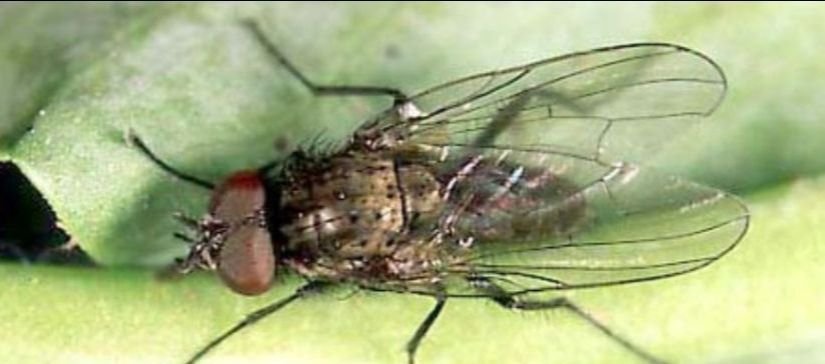CROP UPDATE NO 6 - PEST BULLETIN: BEAN SEED FLY, BRUCHID BEETLE, APHIDS & PEA MOTH - 23 MAY 2019

Bean seed fly reporting
As part of The Horticulture Strategic Centres for Field Vegetables, funded by AHDB with co-funding from NIAB, ADAS, PGRO and Duchy College, we seek to provide, with the help of growers, information about the distribution of the bean seed fly (Delia platura) across the UK in all affected crops. Bean seed fly has a wide host range including Phaseolus beans, peas, broad beans, cucumber, melon, spinach, onion, pepper, potato and maize.
In Crop Update 4 we asked growers and agronomists to report incidents of crop damage caused by bean seed fly via the PGRO App. This can be done for any crop.
Since the middle of April high numbers of bean seed fly adults have been recorded in traps at different locations, indicating that host crops drilled following this period may be at risk.
The PGRO App is available from Apple and Google Stores – search for PGRO Pea and Bean Guide.
The link to the bean seed fly reporting page is shown on the opening page of the app – click on bean seed fly and select the crop type that you’re growing or working with. If the crop is not a legume crop, select ‘other crops’. As you follow the links you will reach the page where you can create a report, and here you can enter the farm name, field name and any additional notes you have about crop type, level of infestation or damage. You can add photos to the report, and it will geolocate you if you’re able to provide the report from in-field, or you can add a postcode if you’re reporting the pest from your office. The data will be used only for the purposes of the project and the map will be visible at http://pgroapp.org/. No personal data will be published.
For further information about the pest, refer to crop update number 4, dated 9th April 2019.
Bruchid beetle
Bruchid beetles emerged from overwintering sites towards the end of April and may be active in field bean crops as the weather becomes warmer, particularly winter beans that are flowering. Winter beans may be close to first pod-set stage. Insecticide sprays should be applied when the temperature threshold of 2 consecutive days at 20°C has been reached and around 50% of pods on bottom trusses are 2 cm long. Sign up for the Syngenta BruchidCast® forecasting service by going to www.syngenta.co.uk/bruchidcast
The forecast predicts when the temperature threshold has been reached in different regions of the UK and indicates suitable conditions for spray applications. Growers should check that first pods have formed on the bottom trusses. To avoid risk to foraging bees spraying should be carried out very late in the evening or at night time.
Pea moth
Pea moth adults have been recorded in low numbers in traps at several sites in East Anglia. Pea moth larvae cause damage to seeds as they develop inside the pods. A prediction system is available that consists of pheromone traps in combination with a temperature model. Pheromone traps should be in place during May and predicted spray dates for your region can be found on the PGRO website at http://www.pgro.org/pea-moth/ under the pest, diseases and weeds tab. Timing of sprays in peas is related to egg development, and this is affected by temperature. Control of the larvae must be carried out following egg-hatch and before they reach the pod, and the monitoring system will accurately predict this. On the predicted spray date, crops which are at the first pod formation stage or those that have flowered should be sprayed, and later crops should only be sprayed when they reach first pod formation. Crops with green pods are susceptible to damage. A second application should be applied 10-14 days later. In vining peas, a lower threshold of damage is tolerated, and traps should be used as an indication of moth presence.
Traps are available from Oecos (Koppert), 11a High Street, Kimpton, Hertfordshire, SG4 8RA, telephone 01438 832481. Email sales@oecos.co.uk.
Aphids
Pea and black bean aphids have been recorded in suction traps during late April and May and reports of pea aphids in pea and bean crops have been received. Updates on suction trap catches and activity of crop aphid species can be found in the summaries provided by AHDB at https://ahdb.org.uk/aphid-news. The AHDB Aphid News bulletins provide information about when aphids are migrating at key times of the year.
Application of pirimicarb should be carefully timed to optimise effectiveness, as it is limited to a single application in beans and peas. Pyrethroids give only partial control of aphids. In vining peas, combining peas and field beans thiacloprid is available to control aphids. Care should be taken when applying insecticides to avoid harm to beneficial organisms.
For further information call the PGRO technical advisory line on 01780 782585.




